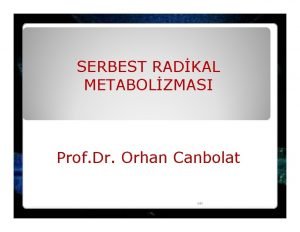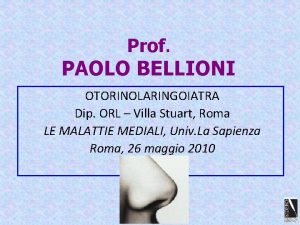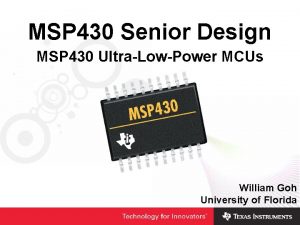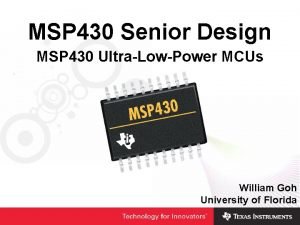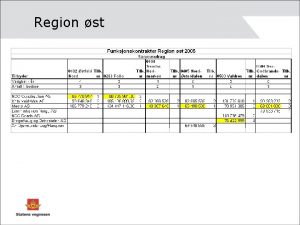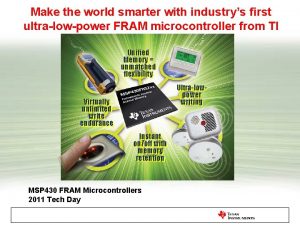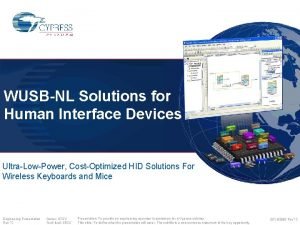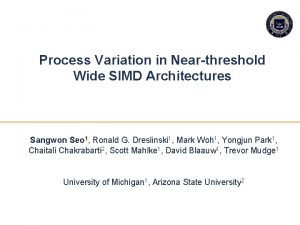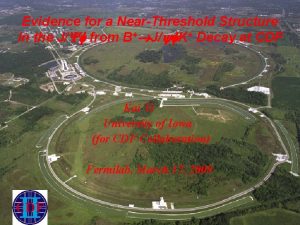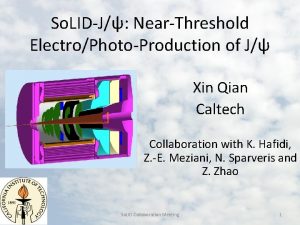UltralowPower Design in NearThreshold Region LOGO Prof M




























- Slides: 28

Ultralow-Power Design in Near-Threshold Region LOGO Prof. : M. Shams Name: Yiqi Chang Student #: 6624968

LOGO Outline 1 Introduction 2 Device and Circuit model 3 Sensitivity Analysis 4 Energy-Delay Optimization 5 Sense-Amplifier-Based PTL (SAPTL) 6 Architectural Optimization 7 Conclusion

LOGO Introduction Question: Why we need ultralow power? What is near-threshold region?

LOGO Introduction Optimization logic circuit Traditional Past five years minimum-delay operational point (MDP) minimum-energy point (MEP)

LOGO Introduction Fig. 1. pareto-optimal design curve Energy-delay trade-off in combinational logic.

LOGO Introduction Method to get ultralow power Use minimum-energy point Voltage-based optimization Various architectural techniques Ultralow power design

LOGO Device and Circuit model Current model: Current of starting point (VGS =VT) : n: subthreshold slope, μ: mobility , Cox: oxide capacitance, and thermal voltage ϕt =k. T/q Current in the vicinity of VT: IC: inversion coefficient, and kfit is model-fitting parameter

LOGO Device and Circuit model inversion coefficient: the degree of inversion of the transistor sub-VT (IC<1)and above-VT (IC > 1)

LOGO Device and Circuit model Fig. 2 Inversion coefficient for HVT and LVT devices for a 65 nm technology.

LOGO Device and Circuit model Delay Model:

LOGO Device and Circuit model Energy Model:

LOGO Sensitivity Analysis gate sizing supply voltage threshold voltage energy-delay trade-offs

LOGO Sensitivity Analysis Sensitivity: a parameter x represents a percent reduction in energy for a percent increase in delay

LOGO Sensitivity Analysis

LOGO Sensitivity Analysis Formulas of S:

LOGO Sensitivity Analysis Good news for MEP region Easier to do than to adjust gate sizing. Not require any layout changes Could be done after chip fabrication

LOGO Energy-Delay Optimization 3 parameters for optimization: Supply Sizing VT(selected from the available discrete values)

LOGO Energy-Delay Optimization

LOGO Energy-Delay Optimization

LOGO Energy-Delay Optimization Make VT is variable for different regions of energy-delay cure

LOGO Sense-Amplifier-Based PTL (SAPTL) How to make VT various?

LOGO Sense-Amplifier-Based PTL (SAPTL) PTL no path from VDD to gnd

LOGO Sense-Amplifier-Based PTL (SAPTL) Dactive: sum of the sense amplifier and driver delays Dstack : the stack delay

LOGO Sense-Amplifier-Based PTL (SAPTL) www. themegallery. com

LOGO Architectural Optimization Some architectural can be used to get optimization Time-multiplexing technique www. themegallery. com

LOGO Architectural Optimization Pipelining for feedback time-multiplexed logic www. themegallery. com

LOGO Conclusion 1. MEP: expensive of performance. 2. MDP: expensive of energy. 3. Energy 20%↑ → 10 -times in performance↑ 4. PTL outperforms standard CMOS in the nearthreshold region(achieving lower energy). 5. The use of time-multiplexing: both lower area and energy without performance penalty (reduced leakage that comes with a lower area).

LOGO
 Triangular space contents
Triangular space contents Active region and saturation region
Active region and saturation region Src logo
Src logo Logo design meaning
Logo design meaning Logo design analysis
Logo design analysis Logo design fundamentals
Logo design fundamentals Principles of logo design
Principles of logo design Logo design principles
Logo design principles Logo metode
Logo metode Bag logo design ideas
Bag logo design ideas Bag logo design ideas
Bag logo design ideas Prof. dr. marcus eckert
Prof. dr. marcus eckert Agamenon quimica
Agamenon quimica Prof david toback
Prof david toback Prof dr ali hossain
Prof dr ali hossain Suganda tanuwidjaja
Suganda tanuwidjaja Th
Th Prova orale tfa sostegno, domanda motivazionale
Prova orale tfa sostegno, domanda motivazionale Sujet divisé texte argumentatif
Sujet divisé texte argumentatif Syzyfowe prace gatunek literacki
Syzyfowe prace gatunek literacki Prof. grace schneider
Prof. grace schneider Sonnet 29 edna st vincent millay analysis
Sonnet 29 edna st vincent millay analysis Sifilis akuisita
Sifilis akuisita Glutatyon peroksidaz yapısı
Glutatyon peroksidaz yapısı Obsatar sinaga
Obsatar sinaga Malnütrisyon tipleri
Malnütrisyon tipleri Professor mark ferguson
Professor mark ferguson Bellioni otorino
Bellioni otorino Ramlimusa.com
Ramlimusa.com























